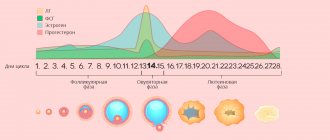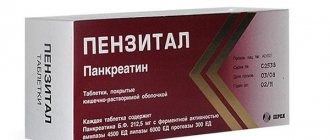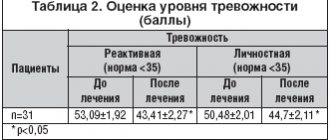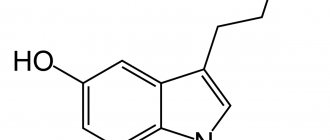Causes of intestinal dyskinesia
Dyskinesia can develop independently or against the background of other diseases of the gastrointestinal tract. Depending on this parameter, the disease is classified into primary and secondary.
Secondary dyskinesias may be associated with the following diseases:
- cholecystitis;
- peptic ulcer of the stomach, duodenum;
- bacterial and viral intestinal infections;
- endocrine diseases (diabetes mellitus, hypothyroidism, etc.).
If the digestive system is healthy, other factors may be the cause of dyskinesia: taking certain medications (antibiotics, psychotropic drugs, contraceptives, etc.), improper (unbalanced) nutrition, allergic reactions, inflammatory diseases of other organs and systems, excess weight.
Dyskinesia of the digestive tract. Abstracts KM.RU.
Dyskinesia of the digestive tract
Dyskinesia of the digestive tract is a functional disease manifested by a violation of the tone and peristalsis of the digestive organs that have smooth muscles (esophagus, stomach, biliary tract, intestines).
Dyskinesia of the esophagus manifests itself in the form of atony and paralysis, spastic dyskinesia (esophagospasm), insufficiency of the pharyngoesophageal and cardiac sphincters.
Atony and paralysis of the esophagus are caused by a violation of its innervation and are observed with lesions of both the central (with head injuries, cerebral hemorrhages, brain tumors, poliomyelitis, etc.) and the peripheral nervous system (damage to the vagus nerve, nerve plexuses of the esophagus), and also the muscular lining of the esophagus (systemic scleroderma, myasthenia gravis, etc.).
Symptoms of atony and paralysis of the esophagus in most cases are masked by manifestations of the underlying disease. Atony of the esophagus is manifested by dysphagia, which occurs when eating dry and poorly chewed food, as well as when eating in a lying position. With atony of the pharyngoesophageal sphincter, swallowing becomes difficult and choking occurs due to the contents of the esophagus entering the respiratory tract. The diagnosis is established on the basis of characteristic clinical symptoms, data from a targeted X-ray examination, and esophagotonocymography.
Insufficiency of the cardiac sphincter occurs with axial hernia of the esophageal opening of the diaphragm, damage to the cardiac sphincter due to surgery for systemic scleroderma, as well as as a result of dyskinesia of the esophagus and stomach (functional failure of the cardia).
Belching and regurgitation of gastric contents after a heavy meal, when bending the body and in a lying position are characteristic. The diagnosis is established on the basis of complaints of frequent, sometimes painful belching and regurgitation (especially when tilting the body) and data from an X-ray examination, which is carried out, in addition to the vertical position of the patient, also in a horizontal position, which makes it possible to detect the flow of a contrast barium suspension from the stomach into the esophagus, and It is not uncommon to establish the presence of a hiatal hernia. Esophagotonocymography allows you to determine the presence and degree of decrease in cardiac sphincter tone. Using esophagofibroscopy and pH-metry
indirectly confirm the presence of cardia insufficiency by identifying the reflux of gastric contents into the esophagus (gastroesophageal reflux). Due to the systematic entry of active gastric juice into the esophagus, reflux esophagitis, peptic ulcer and then peptic stricture of the esophagus often develop.
Spastic dyskinesia of the esophagus (esophagospasm). There is a distinction between primary esophagospasm, which is a consequence of cortical dysregulation of the function of the esophagus, and secondary (reflex and symptomatic), which occurs with esophagitis, peptic ulcer and cholelithiasis, etc. or with diseases accompanied by general convulsive syndrome (epilepsy, etc.). Long-term severe esophagospasm leads to a sharp hypertrophy of the muscular lining of the esophageal wall.
Characterized by intermittent dysphagia, sometimes of a paradoxical nature: it occurs when taking liquid and is absent when swallowing dense and mushy food. Substernal pain associated with swallowing is often noted, but in some cases it resembles coronary pain. The diagnosis is confirmed by x-ray examination; When swallowing a contrast suspension, various spastic deformations of the esophagus are revealed. The course can be long. Complications include the formation of true esophageal diverticula and axial hiatal hernia.
Differential diagnosis is carried out with the initial stages of achalasia cardia. Of primary importance is an x-ray examination, which establishes normal patency of the cardia and clearly identifies the gas bubble of the stomach. Esophagofibroscopy makes it possible to exclude cancer of the esophagus and other organic lesions, which often occur with secondary esophagospasm.
Gastric dyskinesia is manifested by acute atony, chronic hypotension and gastroptosis, hypertensive dyskinesia, pneumatosis.
Acute atony of the stomach is paresis of the muscles of the stomach, arising both as a result of direct damage to the nerve formations innervating the stomach, and reflexively. The disease is rare and can be observed with myocardial infarction, peritonitis, pneumonia, with thrombosis of gastric vessels, sometimes against the background of long-term pyloric stenosis, with some severe infectious diseases (typhoid fever, etc.); in surgical practice - in case of gastric trauma, spinal cord injury, in the postoperative period and the patient’s recovery from anesthesia.
Characterized by a feeling of heaviness, fullness in the epigastric region, retching (vomiting a large amount of greenish liquid), hiccups, dull arching pain in the pit of the stomach. Symptoms quickly increase, complications arise (impaired blood supply to the stomach wall, gastric rupture). Upon examination, a significant, rapidly increasing bulge in the epigastric region is determined; upon percussion above it, a wide zone of tympanic sound is determined, extending beyond the midline to the right. The gastric tube is freely inserted into the stomach, a very large amount of liquid contents is evacuated and temporary relief occurs.
Chronic gastric hypotension and gastroptosis are usually combined. There are three degrees of gastroptosis a. At degree 1, minor curvature is defined as 2-3 cm above l. biiliaca, with II degree - at the level and with III degree - below it. There are also total and partial gastroptosis, i.e. anthropopyroptosis. Gastroptosis is more common in women, usually aged 15-45 years and older.
Etiology, pathogenesis.
Congenital gastroptosis is primarily caused by constitutional asthenia: an excessively long mesentery of the colon, which, when descending, stretches the gastrocolic ligament and pulls along the greater curvature of the stomach, causing gastroptosis. Prolapse of the antropyloric part of the stomach leads to kinking of the initial part of the duodenum, which further impairs gastric emptying and can cause pain. Acquired gastroptosis is observed with a sharp weakening of the abdominal wall muscles due to significant weight loss, after childbirth, removal of ascitic fluid or large abdominal tumors. It is explained by stretching of the ligamentous apparatus that fixes the position of the stomach. In most cases, anthropopyroptosis is combined with elongation and hypotension of the stomach; total gastroptosis is observed only with simultaneous prolapse of the diaphragm (due to emphysema, massive pleural effusion, etc.), displacing the fundus of the stomach downward.
Symptoms, course.
In most cases, grades 1 and 2 gastroptosis are asymptomatic. Less commonly, there are complaints of a feeling of heaviness, bloating, fullness in the epigastric region, especially after a heavy meal; dull aching pain in the epigastrium is relieved when the patient is lying down and is explained by stretching of the ligaments that fix the stomach. Cardialgia is sometimes observed. Some patients experience short-term abdominal pain while running or jumping, which goes away on its own, nausea, and loss of appetite. Constipation is common. The combination of gastroptosis with ptosis of other organs (liver, kidneys, etc.) can give additional symptoms. Patients with constitutional gastroptosis often present a large number of neurotic complaints. When examining a patient with gastroptosis, a sagging abdomen attracts attention, while when it is pulled up, the pain often decreases or disappears. Prolapse of the pylorus and greater curvature of the stomach can be determined by palpation. The diagnosis is confirmed by x-ray examination. Achlorhydria is common in gastric juice.
Prevention of gastroptosis and gastric hypotension lies in proper physical education of children and adolescents. Strengthening the abdominal wall in women during pregnancy and in the first months after childbirth and the use of therapeutic exercises are of great importance.
Hypertensive dyskinesia of the stomach is characterized by an increase in its tone and impaired peristalsis of the spastic type. It is observed both against the background of general diseases manifested by a spastic state of the muscles (tetanus, lead intoxication, etc.), and as a result of reflex changes in gastric motility (with peptic ulcer of the stomach, pylorus, with cholelithiasis, etc.). Sometimes it is a consequence of hysterical neurosis or a temporary increase in stomach tone under the influence of emotions and mental stress. Limited (local, local) hypertension and spasm of the muscular lining of the stomach wall are usually reflexive (local spasm of the greater curvature with a peptic ulcer of the lesser curvature of the stomach, pylorospasm with an ulcer of the pylorus or duodenal bulb). Gastric tetany may be a consequence and one of the manifestations of parathyroid insufficiency and hypocalcemia. Smoking increases spasmodic contractions of the stomach. Significant hypersecretion and a hyperacid state of the stomach contribute to increased pyloric spasm.
Symptoms, course.
Hypertensive dyskinesia is asymptomatic or manifests itself as pain in the epigastric region, often ulcer-like. With pylorospasm there is a tendency to vomit. On X-ray examination, the size of the stomach (in cases of total hypertension) is small, it has the shape of a horn. The contrast mass lingers for a long time in the upper parts of the stomach and takes the form of a widened wedge with the apex directed distally. With pylorospasm, the movement of the contrast mass through the pylorus is difficult and occurs in small, infrequent portions; in the phase of decompensated pylorospasm and pyloric stenosis, the stomach is dilated, its peristalsis is weakened. Long-term pyloric spasm can lead to the formation of organic pyloric stenosis.
Gastric pneumatosis is an increased amount of air in the stomach. It can occur as a result of an organic disease (with hiatal hernia, damage to the phrenic nerve, the left dome of the diaphragm, etc.), but more often with disorders of higher nervous activity, hysterical psychosis (neurogenic aerophagia, nervous belching).
Symptoms, course.
A feeling of heaviness, pressure, fullness in the epigastrium and frequent strong belching, sometimes so loud that it prevents patients with gastric pneumatosis from appearing in public places. Due to the high position of the left dome of the diaphragm, cardialgia may be observed (relieved after belching, probing the stomach, intensified after a heavy meal). Percussion and x-ray examination reveal a large gas bubble in the stomach.
Differential diagnosis with axial hiatal hernia and cardioesophageal cancer is carried out using X-ray and gastroscopic examination.
Biliary dyskinesias are functional disorders of the tone and motility of the gallbladder and biliary tract. There are hypertonic-hyperkinetic, characterized by a hypertonic state of the gallbladder (usually in combination with hypertonicity of the sphincters of Lutkens and Oddi), and hypotonic-hypokinetic, which is characterized by a hypotonic state of the gallbladder and sphincter of Oddi. Occurs more often in women. Hypertensive-hyperkinetic dyskinesia is often detected at a younger age, and hypotonic-hypokinetic dyskinesia is often detected in asthenics and in people over 40 years of age.
Etiology, pathogenesis.
Dyskinesia of the biliary tract is caused primarily by a violation of neurohumoral regulation, occurring in neurosis, diencephalic syndrome, solarium, endocrine-hormonal disorders (hypo- and hyperthyroidism, menopause, insufficient function of the ovaries, adrenal glands and other endocrine glands). The hypertensive-hyperkinetic form occurs reflexively (with peptic ulcers, colitis, appendicitis, adnexitis, etc.), when the production of gastrointestinal hormone (cholecystokinin-pancreozymin) is disrupted by the duodenal mucosa in atrophic duodenitis and other diseases. Asthenic conditions caused by severe infectious diseases, viral hepatitis, vitamin deficiency, malnutrition, various endogenous and exogenous intoxications can also lead to the development of biliary dyskinesia. With a pronounced asthenic constitution, a sedentary lifestyle, poor nutrition with very long intervals between meals, a hypotonic-hypokinetic form of dyskinesia is relatively often detected. Frequent but irregular meals, excessive passion for spicy dishes, systematic use of spices in food that irritate the mucous membrane of the digestive tract predispose to the occurrence of hypertensive-hyperkinetic dyskinesia of the biliary tract. Organic lesions of the biliary system (cholecystitis, cholangitis, cholelithiasis, etc.), parasitic, helminthic infestations of the digestive tract often occur with pronounced symptoms of dyskinesia of the gallbladder and biliary tract.
Symptoms, course.
Hypertensive-hyperkinetic dyskinesia of the biliary tract occurs with paroxysmal pain in the right hypochondrium of an aching or cramping nature, reminiscent of attacks of colic in cholelithiasis. The occurrence of attacks is facilitated by anxiety, significant neuropsychic stress, negative emotions; in women, exacerbations can be associated with the menstrual cycle. The pain can radiate to the right shoulder blade, right shoulder, sometimes to the heart area, accompanied by general autonomic reactions - sudden sweating, pallor, nausea, sometimes headache, palpitations, etc. Painful attacks last from several minutes to several days; Dull pressing and aching pain in the right hypochondrium can persist for weeks, sometimes intensifying or subsiding. During a painful attack, the abdomen is not tense. Jaundice, febrile reaction, leukocytosis and increased ESR were not observed after the attack.
The hypotonic-hypokinetic form of dyskinesia is manifested mainly by low-intensity pain in the right hypochondrium, often long-lasting. Palpation reveals slight pain in the area of the gallbladder.
The diagnosis is confirmed by multi-stage chromodiagnostic duodenal sounding; with the hypertensive-hyperkinetic form of dyskinesia, phase II (closed sphincter of Oddi) can be lengthened, phase IV (gallbladder contractions) can be shortened. With the hypotonic-hypokinetic form of dyskinesia, phase II may be absent (the sphincter of Oddi is constantly in a relaxed state), phase IV is delayed and prolonged; often the bladder reflex can be obtained only with the introduction of a sufficiently strong irritant (cholecystokinin-pancreozymin). Oral cholecystography and intravenous cholegraphy, echography, and in more diagnostically complex cases, computed tomography confirm the functional nature of the disease. In the hypertonic-hyperkinetic form, serial radiography is used to determine an accelerated and strong contraction of the gallbladder after the introduction of a stimulant (two egg yolks); in the hypotonic-hypokinetic form, the gallbladder is large, in some cases it is lowered, and contracts sluggishly. The hypotonic state of the sphincter of Oddi is sometimes detected during an X-ray examination of the duodenum (flow of contrast mass through the relaxed sphincter of Oddi into the common bile duct). Recently, radioisotope cholecystography has begun to be used.
The course is usually long with periods of exacerbation (often provoked by emotional stress, nutritional disorders) and remission. Over time, however, the gallbladder and ducts may become inflamed or gallstones may form.
Prevention of biliary dyskinesia consists of maintaining a rational diet and diet, normalizing work and rest, systematic exercise, eliminating stressful situations at work and at home, and timely treatment of neurotic disorders.
Intestinal dyskinesias include intestinal neuroses and reflex disorders, which are observed both in organic diseases of the digestive system (peptic ulcer, cholecystitis, cholelithiasis, appendicitis, anal fissure, etc.) and in cases of damage to other organs and systems (urolithiasis, adnexitis and etc. ).
Etiology, pathogenesis.
Neurogenic intestinal dyskinesias, as a rule, are accompanied by other manifestations of general neurosis, but are leading in the clinical picture of the disease. Contributing factors are mental stress (the “bear disease” is well known - diarrhea during anxiety), family, household or industrial conflicts, especially in combination with disordered and irrational nutrition (hasty eating, eating too hot, spicy or rough food, etc.). The so-called Achilles diarrhea in atrophic gastritis with secretory insufficiency of the stomach has a functional character. In this case, acceleration of peristalsis occurs due to irritation of the intestinal mucosa by undigested food mass. Functional intestinal disorders can be a consequence of endocrine disorders (with thyrotoxicosis - diarrhea, with insufficient thyroid function - intestinal atony and constipation). Finally, functional intestinal disorders can accompany diseases of the central and peripheral nervous system (parkinsonism, syringomyelia, tumors and spinal cord injuries, etc.).
Symptoms, course.
Total intestinal dyskinesia is manifested by stool disorders - chronic constipation or diarrhea, and there are no pathological impurities in the stool (mucus, blood, etc.), sensations of rumbling, transfusion in the abdomen or heaviness, sometimes deterioration of appetite, an unpleasant taste in the mouth. X-ray examination reveals accelerated or delayed passage of barium mass through the intestines. Sigmoidoscopy and colonoscopy (as well as biopsy) do not reveal morphological changes in the mucous membrane of the colon.
Duodenal dyskinesia and duodenostasis often accompany peptic ulcer and cholelithiasis; clinical symptoms are pain in the epigastric region of a spastic nature, a feeling of pressure or fullness in the epigastric region, nausea, and bouts of vomiting. An X-ray examination of the duodenum reveals a long retention of barium suspension in it (over 40 s), alternating spasms and dilations of various parts of the intestine, and throwing of the contrast mass into the more proximal parts of the intestine and stomach.
Dyskinesia of the small intestine is manifested by cramping abdominal pain, diarrhea or the appearance of semi-liquid stools, rumbling and a feeling of transfusion in the abdomen.
Dyskinesia of the colon can occur after dysentery. Disorders of the motor function of the colon are manifested by spasm or atony. Either diarrhea may be observed - functional diarrhea (in contrast to colitis, feces usually do not contain impurities of mucus and blood), or constipation. In the latter case, independent stool does not occur from several days to 1-2 weeks. A special clinical form of motor-secretory disorders of the colon is mucosal colic, in which attacks of abdominal pain occur, accompanied by the release of feces with a significant amount of mucus, usually in the form of ribbons or films. Microscopic examination often reveals a large number of eosinophils and Charcot-Leyden crystals.
Differential diagnosis is carried out with enteritis, enterocolitis; confirmation of the functional nature of the disease is the appearance or intensification of intestinal dysfunction under the influence of emotions, mental disorders, the presence of signs of general neurosis, other diseases often accompanied by intestinal disorders, the appearance of unchanged intestinal mucosa during duodenoscopy and colonoscopy, the absence of changes in the mucosa during histological examination of biopsy specimens various parts of the intestinal mucosa. The cause of persistent constipation can be organic damage to the intestine: tumors, adhesions in the abdominal cavity, as well as abnormalities in the development of the colon (megacolon), which is confirmed by irrigoscopy and endoscopic examination of the colon.
Treatment.
For secondary atony of the esophagus, treatment of the underlying disease. Patients should be advised to avoid those positions in which insufficiency of the cardiac sphincter function manifests itself, that is, gastroesophageal reflux occurs. Physical exercises and all types of work involving abdominal tension and body bending are contraindicated. It is recommended to sleep with the head of the bed raised high. If peptic complications occur, appropriate therapy is indicated. Treatment for secondary esophagospasm should primarily be aimed at treating the underlying disease. Regular frequent (4-6 times a day) split meals, a mechanically and thermally gentle diet are recommended. Necessary medications are prescribed.
Bibliography
To prepare this work, materials from the site https://www.policlinica.ru/ were used
Dyskinesia of the digestive tract.
Abstracts KM.RU.
https://student.km.ru/ref_show_frame.asp?id=9F0478D553B14A42A654A641B7E13B5F&search=
Symptoms and manifestations
Manifestations of intestinal dyskinesia depend on the form of the disease: spastic is characterized by colic and diarrhea, atonic is characterized by impaired peristalsis and constipation (including the discharge of large amounts of mucus). Common symptoms include the following:
- bloating, especially in the evening;
- pain (dull or aching, cutting, spasmodic), heaviness in the abdomen, discomfort;
- belching;
- nausea.
Typically, unpleasant symptoms intensify after eating and subside immediately after bowel movement.
The consequences of the disease also depend on its form. As a result of prolonged bowel dysfunction, dehydration or intoxication, anal fissures, and exacerbation of hemorrhoids may occur. With prolonged intoxication with feces, general health worsens, appetite decreases, dizziness and skin rashes appear.
Intestinal dyskinesia - symptoms, diagnosis, treatment and prevention
Details Author: LDC Neuron Published: November 10, 2015
Sometimes we say, we will never get sick with this, or, we live in a different environment and zone... but we are deeply mistaken, for this disease, namely for intestinal dyskinesia, there is neither distance nor barriers, and anyone can get sick with this insidious disease. But in this article we will look at both its symptoms and how to treat intestinal dyskinesia at home!
Classification
There are types of biliary dyskinesia, and the symptoms of the disease depend on them.
The hypotonic or hypomotor form develops with insufficient contractility of the gallbladder and its ducts. More common after 40 years.
Hypertonic or hypermotor develops with increased contractility of the gallbladder and its ducts. It is more common in children and adolescents and young adults.
Hypotonic-hyperkinetic dyskinesia, also called mixed, is manifested by symptoms of both hypotonic and hypertonic types.
Treatment of JVP
Therapy for biliary dyskinesia should be comprehensive.
It is necessary to normalize the diet, sanitize foci of infection, and get rid of intestinal dysbiosis if it is confirmed during diagnosis. It is important not only to eliminate the symptoms of the disease, but also to prevent their reappearance in the future. One of the main recommendations is diet therapy. It is necessary to avoid fatty and fried foods, store-bought confectionery, cold dishes, and gas-causing foods.
For the hypertensive type of the disease, choleretic drugs are prescribed - choleretics, heated mineral waters, antispasmodics during an attack.
In case of hypotension - choleretic drugs-cholekinetics, mineral waters with a high content of minerals at room temperature.
Recommendations for biliary dyskinesia also include physical therapy - electrophoresis with magnesium sulfate, ultrasound, low-frequency pulsed currents. You should regularly visit a gastroenterologist to monitor your condition. If necessary, adjustment of therapy is required, since the disease is chronic. Annual trips to health resorts are helpful.
Treatment of dyskinesia
For recovery in a short time, gastroenterologists recommend treating adult patients using an integrated approach. This is a combination of drug therapy methods and traditional medicine recipes.
In addition, it is important to review the diet of a person suffering from spastic colitis. The diet should include foods enriched with vitamins, minerals and fiber. A sufficient amount of fresh fruits and vegetables will reduce the risk of relapse of the disease.
Attention should also be paid to timely bowel movements. In a healthy person, defecation occurs once a day at approximately the same time.
Medicines
The therapeutic method of combating dyskinesia directly depends on its type:
- Hypermotor colitis precludes the use of laxative medications. Gastroenterologists prescribe antispasmodics to alleviate the condition (No-spa is taken 1-2 tablets three times a day).
- Hypomotor dyskinesia should be treated with the use of enzymes and choleretic drugs.
To put the nervous system in order, antipsychotics and antidepressants are prescribed.
Folk remedies
Alternative medicine should not replace the main course of treatment. Its task is to complement and enhance the effect of drug therapy. In addition, there are cases when not all medications can be taken. For example, pregnancy or individual intolerance to components.
Tincture for dyskinesia
Take 2 tablespoons of a mixture of yarrow, St. John's wort flowers, motherwort herb, sage, oak bark. Pour 250 ml of boiling water and leave for two hours. Then strain the healing infusion through a bandage or gauze.
Features of nutrition for hypomotor dyskinesia
Dried fruits stimulate intestinal function.
Since the main goal of this type of diet is to stimulate motility and speed up bowel movements, it is important to include certain dishes in the menu.
Despite the restrictions, such a diet must take into account all the needs of the body. Foods and dishes that stimulate bowel function:
- fresh, baked, stewed, steamed
- vegetables, greens;
- fresh fruits, berries, apples are especially useful;
- dried fruits;
- hard-boiled eggs (no more than 2 pieces per day);
- wholemeal bread;
- dairy products;
- first courses, mainly cooked in vegetable broth (borscht, pickles, cereal-based soups);
- well-boiled porridge cooked in water;
- lean varieties of veal, beef, rabbit, chicken,
- turkey, offal, sea and river fish;
- natural butter, vegetable oils;
- sweets in minimal quantities (honey, jelly, jam, ice cream);
It is very useful to add bran from various cereal crops (wheat, buckwheat, rye) to the first and second courses in courses of 6 weeks. They are poured with boiling water in advance or mixed with soups and side dishes. Bran helps to establish regular bowel movements. For the same purposes, it is recommended to eat cold food.
Spices are added to dishes in moderation. Recommended drinks are kvass, weak black and green tea. It is undesirable to consume foods that stimulate fermentation and rotting of food, or foods that remain in the digestive tract for a long time. Prohibited products:
Causes of intestinal diseases:
- long-term and severe violation of the diet
- alcohol abuse
- food allergy
- intestinal infections and parasites (salmonella, lamblia, intestinal escherichia, helminths)
- chronic poisoning with compounds of lead, mercury, phosphorus, arsenic
- radiation damage
- uncontrolled use of medications (antibiotics, laxatives, etc.)
Intestinal diseases are promoted by a sedentary lifestyle, emotional and mental stress, and stress.
Therapeutic treatment
If impaired motility of the gallbladder is not complicated by severe structural pathologies, doctors prescribe only drug therapy. The main task is to normalize the functioning of the gallbladder and facilitate the evacuation of bile into the duodenum. Before prescribing specific medications, it is necessary to determine the type of disease.
Possible destinations:
- Myotropic antispasmodics that relax the smooth muscles of the gallbladder. These drugs are necessary for the hypertensive form of the disorder.
- Choleretic agents are substances that stimulate the functions of the liver and gallbladder. If the patient has too active muscle contractions, cholespasmolytics are needed to slow down the motility of the organ and eliminate spastic phenomena.
- Cholekinetics and prokinetics for weakened gallbladder motility. These drugs simultaneously improve the contraction of the organ and facilitate the release of bile into the intestines.
- Additional medications: anti-inflammatory drugs and antidepressants to eliminate complications of the disease.
In addition to drug therapy, patients are required to be prescribed a therapeutic diet. The recommended diet depends on the form of the motor disorder, but most often patients are prohibited from consuming too fatty foods and alcoholic beverages.
General information
Intestinal dyskinesia is a term that defines a complex of intestinal disorders that arise as a result of disturbances in the motor functions of the intestines. Mostly such disorders occur in the colon .
Intestinal dyskinesia is characterized by the absence of organic changes, but the organ cannot perform its functions normally. According to the World Health Organization, about a third of all people on the planet suffer from this disease. In most cases, the disease is typical for women.
Possible complications
Dyskinesia becomes aggravated by exacerbation of the conditions that provoked its appearance:
- cholecystitis;
- cholelithiasis;
- gastritis;
- pancreatitis.
Spastic colitis affects the patient’s usual lifestyle, reducing his social activity. A person withdraws into himself, becomes susceptible to apathetic moods and depression.
It is extremely rare to achieve full recovery. In most patients, symptoms persist all the time and worsen if preventive measures are not followed.
Diet is an important part of treatment
If you have dyskinesia, you should not eat fatty foods.
Most often, this disease is provoked by dietary disorders and bad eating habits.
In children, such habits are formed by parents, so most of the responsibility for the appearance of dyskinesia in a child falls on them.
Excess weight is another cause of intestinal pathology. Following a diet will help restore the optimal weight of a sick person.
In addition to overeating, dyskinesia is caused by dietary disorders - an excess of refined foods and animal fats. To achieve sustainable remission, you will have to stick to the diet for a long time. Basic Rules:
- Do not eat fatty foods;
- Adhere to gentle methods of food processing - stewing, steaming;
- Keep your food intake even - at least 5-6 times a day.
- Avoid overeating, eat small portions.
In case of exacerbation of dyskinesia, adhere to the following nutritional principles for 2 weeks:
- You need to eat pureed food, or twisted through a meat grinder, evenly chopped.
- Fruits are baked in the oven or rubbed through a sieve;
- Fresh fruits should not be consumed during an exacerbation; even bananas are steamed and wiped afterwards;
- Fruit and berry juices are diluted by half or a third with water; vegetable juices are not consumed at all.
Sample menu
The morning should start with cottage cheese.
Taking into account the above recommendations, it is not difficult to create a menu for intestinal dyskinesia.
- Morning - porridge with water, salad of boiled vegetables or cottage cheese with sour cream, or buckwheat porridge with dried fruits. Drinks – tea with dried bread, fermented baked milk.
- Second breakfast - fresh fruit or compote, jelly.
- Lunch - vegetable soup with cereals or vegetarian noodle soup, for the second - vinaigrette with vegetable oil or stewed fish with vegetables, for the third - dried fruit compote, jelly.
- Afternoon snack – fresh fruit, compote with dry cookies, biscuits, crackers.
- Dinner – buckwheat or millet porridge, steamed omelette, tea with bread.
- Snack before bed - kefir with soaked dried apricots or prunes.
The correct selection of dishes, careful selection of products that correspond to the type of dyskinesia will significantly improve the patient’s well-being, eliminate negative symptoms of the disease, normalize weight, and improve metabolism.
List of sources
- Maev I.V. Irritable bowel syndrome: a manual for doctors / I.V. Maev, S.V. Cheryomushkin. - M., 2012.
- Ivashkin V.T., Komarov F.I., Rapoport S.I. A short guide to gastroenterology. M.: M-Vesti Publishing House LLC, 2001.
- Callie E. Digestive system: diseases and their treatment. - St. Petersburg: Norint, 2000.
- Grigoriev P.Ya., Yakovenko A.V. Clinical gastroenterology. M., 1998.
- Gracheva N.M., Yushchuk N.D., Chuprinina R.P. and others. Intestinal dysbacteriosis, causes, diagnosis, use of bacterial biological preparations: A manual for doctors and students. M., 1999.







